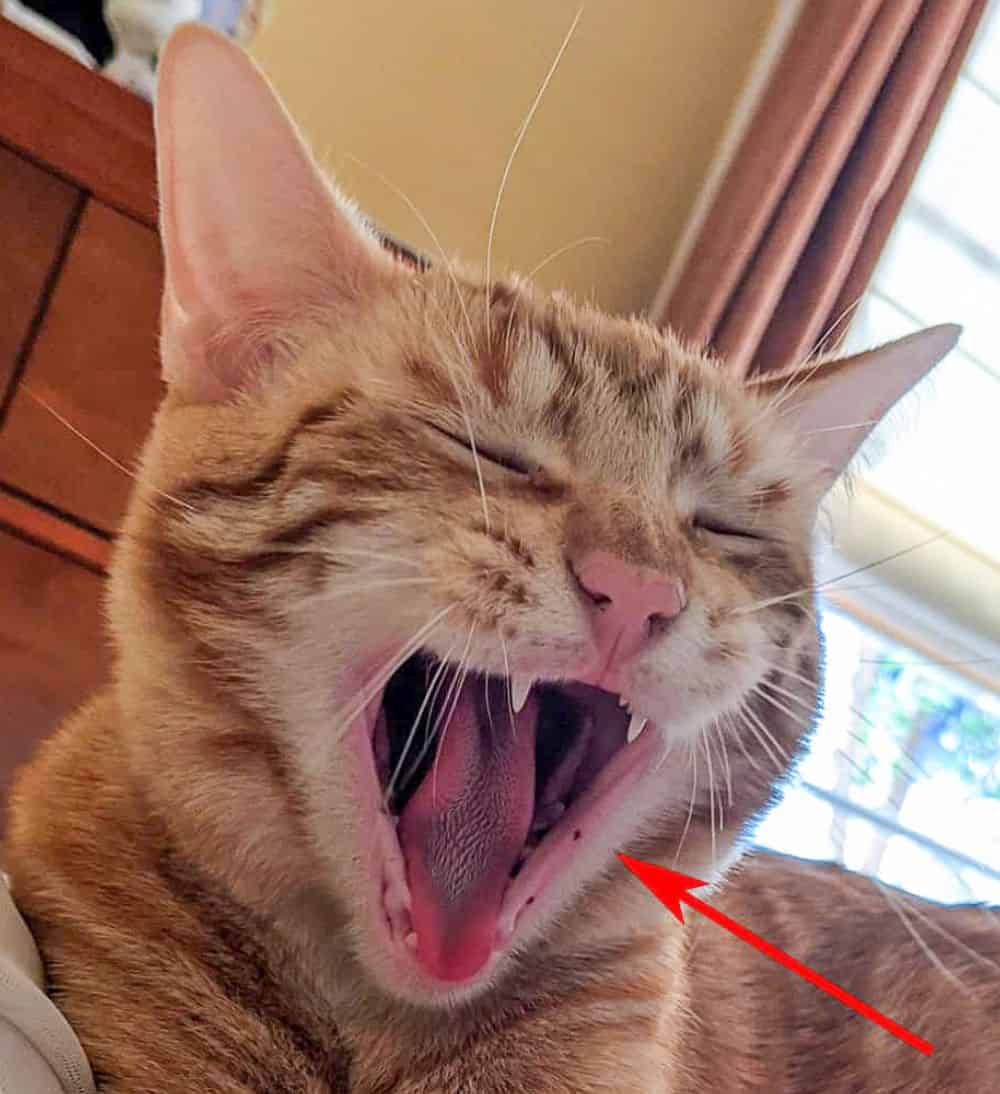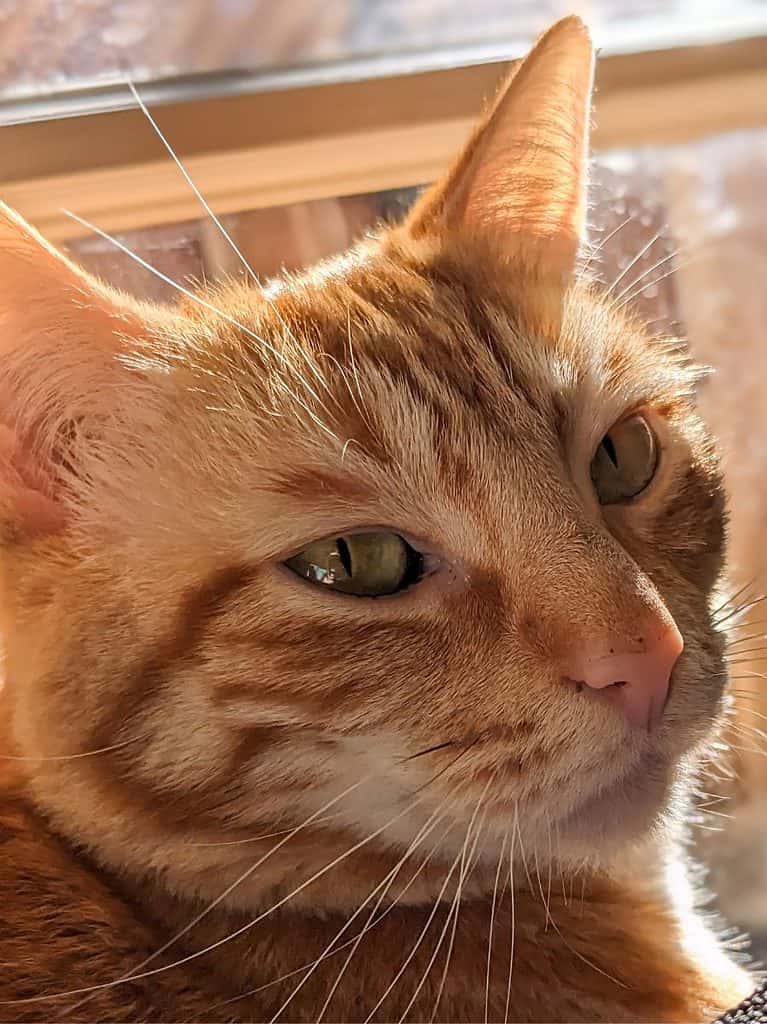If you have an orange tabby cat, chances are you have noticed the development of black or brown spots that show up around their eyes, nose, and mouth.
Those dark spots on an orange tabby are known as “lentigo simplex” which is oftened shortened to just lentigo.
A single dark spot is known as a lentigo and multiple darks spots are known as lentigos or lentigines. The word lentigo comes from the Latin word “lentigines” which means freckles.
What is lentigo?
Lentigo is a skin condition that is characterized by the appearance of small, darkened spots on the skin. These spots, which are sometimes called “freckles,” are caused by an increase in the concentration of melanin in the affected area.
Lentigo can occur in humans and animals, including cats.
Lentigo in cats is more common in older cats, but can occur in cats of any age. For cats that are prone to lentigo, the spots can grow in size and spread as the cat ages.
For the most part, lentigo is a benign condition and does not cause any pain to the cat, much like how freckles affect humans.
Where does lentigo occur in cats?
Lentigo in cats is usually found on the lips, nose, ears, and eyelids, but can also occur in other areas.
Lentigo in cats can vary in size and color, and may appear as a single spot or multiple spots.

Why do orange cats tend to develop lentigo more than other cats?
Orange cats, also known as ginger cats, are more prone to developing lentigo because they have a gene that produces the orange pigment, pheomelanin. This gene can also cause a greater concentration of melanin in the skin, which can lead to the development of lentigo.
However, it is important to note that not all orange cats will develop lentigo, and other cats of different colors can also develop these spots.
Lentigo is a mostly benign condition
Lentigo is generally not harmful to cats and does not cause any discomfort or pain. In fact, many people find freckles on cats to be endearing and unique. However, it is important to monitor the size and appearance of the spots.
If your cat’s lentigos begin to change significantly in size, shape, or color, it may be a sign of skin cancer, which can be a serious condition in cats.

If you notice any changes in your cat’s skin, it is important to take them to a veterinarian for a checkup. The veterinarian can examine the spots and determine if they are a cause for concern. They may also recommend additional testing or treatment if necessary.
References
Nash, S., & Paulsen, D. (1990). Generalized lentigines in a silver cat. Journal of the American Veterinary Medical Association, 196(9), 1500-1501.
Scott, D. W. (1987). Lentigo simplex in orange cats. Companion animal practice (USA).






